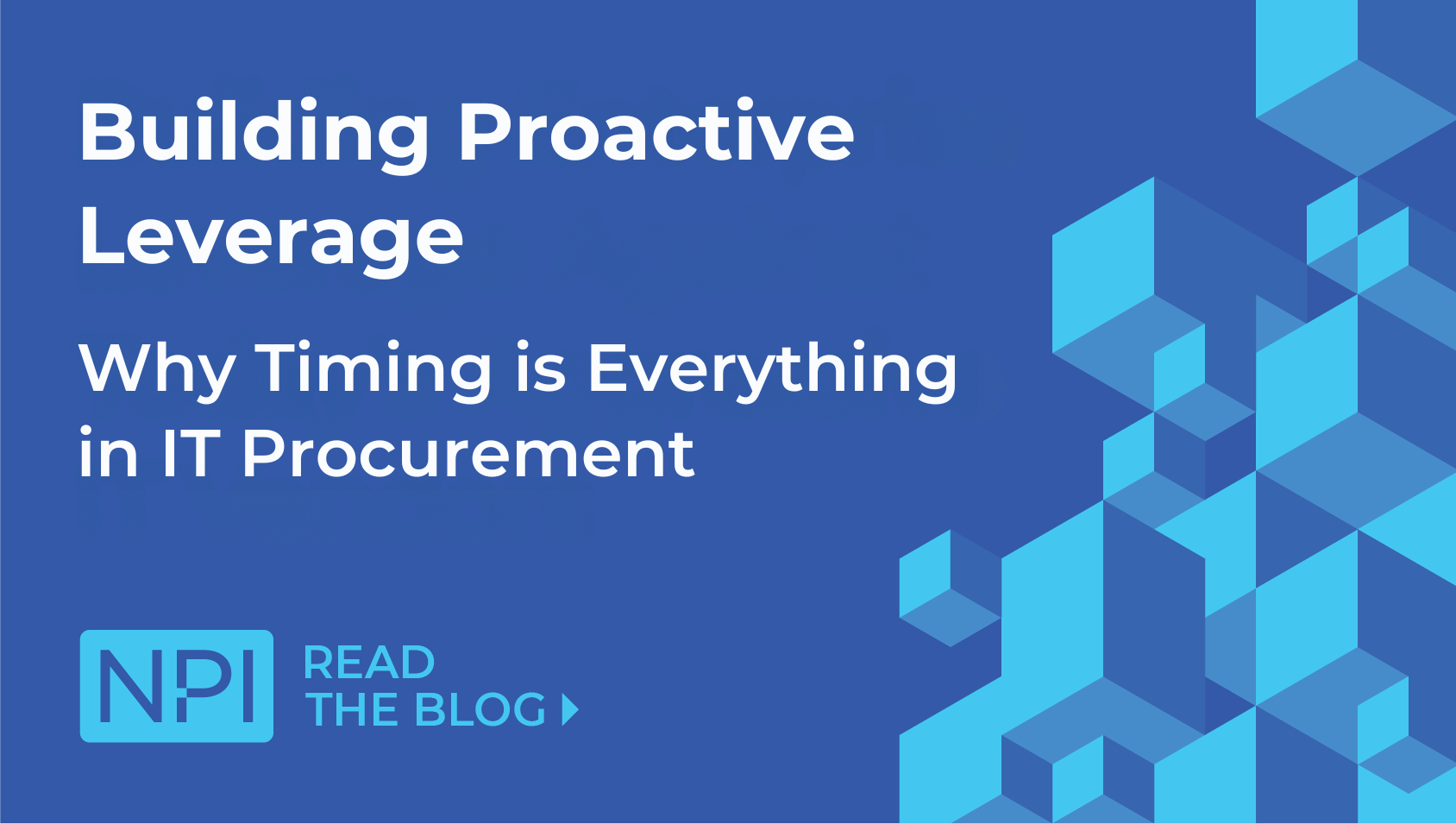BLOG
Building Proactive Leverage: Why Timing Is Everything in IT Procurement
Interested in learning more about how to build buy-side leverage during the IT buying process? Download our bulletin on Building Enterprise Leverage Against Today's Aggressive IT Vendors.
If you've been in IT procurement for any length of time, you've probably noticed a shift in vendor behavior. Today's suppliers – from industry giants to smaller new entrants – have adopted increasingly aggressive tactics designed to maximize their revenue and sidestep carefully established procurement processes.
So how do successful organizations maintain leverage in this challenging environment? The answer lies in one crucial factor: timing.
The 9-12 Month Advantage
The strongest negotiating positions don't materialize overnight. They're built through deliberate planning that begins well before your contract expires. Leading organizations start their leverage-building activities 9-12 months before renewal deadlines, and for good reason.
This extended runway provides the time needed to conduct thorough market analysis, evaluate alternatives meaningfully, develop credible competitive threats, and establish thorough and accurate demand definition. Rushing narrows your options – controlling the timing is a critical success factor.
Beyond Just Starting Early
While beginning the process early is vital, timing considerations should extend beyond mere calendar planning. Smart procurement leaders embed protective measures directly into their contracts that give them both leverage and time to course-correct buying decisions:
- Requiring vendors to provide executable renewal documents 6-9 months in advance
- Including clauses that void price increases not disclosed before specific deadlines
- Establishing clear timelines for proposal evaluation and negotiation milestones
These structured processes counter suppliers' attempts to compress timelines and create artificial urgency.
Creating Credible Alternatives Takes Time
Let's be honest: creating credible alternatives is the cornerstone of negotiation leverage, but it requires real work and can't be rushed. This isn't about posturing; vendors can quickly distinguish between genuine possibilities and negotiation theater.
Developing true alternatives requires:
- Market testing with alternative providers
- Proof-of-concept implementations
- Migration planning
- Technical and business stakeholder buy-in
None of these activities can be compressed into a few weeks before renewal. They demand the runway that only proper timing can provide.
Countering Last-Minute Tactics
We've all experienced vendors' last-minute maneuvers: delayed quotes delivered just before contract expiration, surprise restructuring, or product repackaging introduced with minimal notice. These tactics are specifically designed to undermine your leverage by compressing your timeline.
By establishing clear timelines and requirements upfront, you remove the power of these last-minute surprises. When a vendor knows you've built in time to pursue alternatives seriously, they're far less likely to test your patience with eleventh-hour changes.
From Reactive to Proactive
The shift from reactive to proactive procurement doesn't happen by accident. It requires intentional planning and organizational discipline. But buying teams that make this shift find they're in control and driving great outcomes.
They approach each negotiation from a position of strength, with real options, clear information, and the time needed to make strategic decisions rather than rushed compromises.
As vendor tactics continue to evolve, one truth remains constant. In IT procurement, timing isn't just about when you start – it's about how you structure the entire procurement lifecycle to maintain leverage throughout the process.
Want to learn more about how you can increase negotiation leverage with your IT vendors?
Contact us.


